From paart budo buki by Mats Hjelm "Bujinkan Toryu"
Suburi Naginata?… Read More
From paart budo buki by Mats Hjelm "Bujinkan Toryu"
Suburi Naginata?From paart budo buki by Mats Hjelm "Bujinkan Toryu"
Suburi Naginata?From 武神館兜龍 Bujinkan Toryu by Mats Hjelm "Bujinkan Toryu"
In the realm of stealth and strategy the Ninja once harnessed 海蛍 Umi Hotaru, sea-fireflies (Vargula hilgendorfii) a remarkable natural phenomenon as a nighttime guide. This essay delves into their ingenious use of these bioluminescent creatures for night operations.
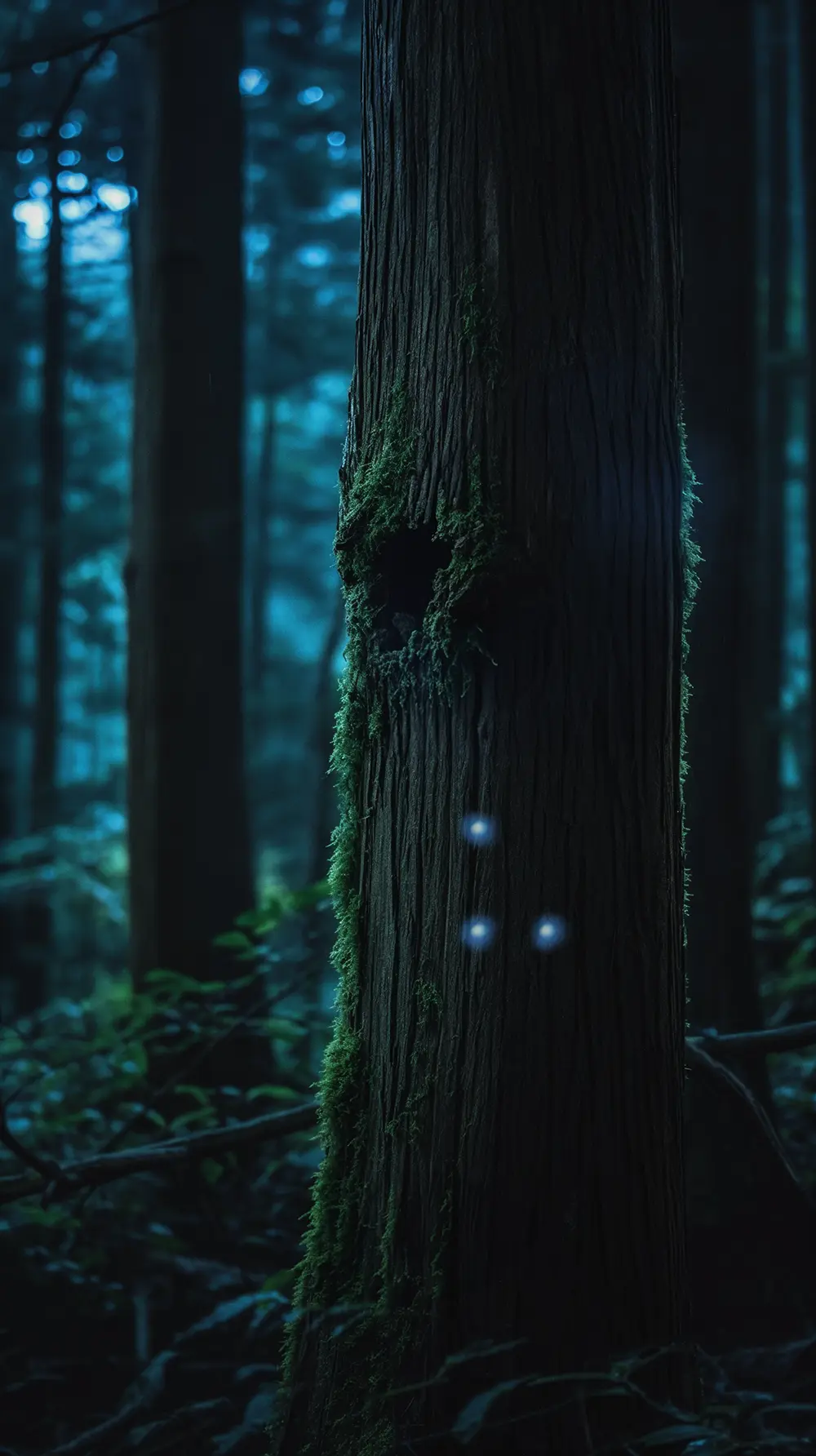


The Ninja sought clear seas with sandy bottoms, ideal habitats for sea-fireflies. Using bait, they attracted and collected these luminous beings with precision. Ninjas kept them alive until needed, showcasing an exceptional understanding of nature and resourcefulness.
These creatures served as a subtle light source. They enabled ninjas to read maps and signal allies undetected by enemies. The method not only reflects their survival skills but also their innovative approach to problem-solving.
The practice of using sea-fireflies illuminates the depth of ninja ingenuity. It exemplifies their ability to blend with the natural world, turning simple organisms into tools of espionage and communication.
Below is a small segment from the Hizō no Densho from the Yasuda-ryū translated.
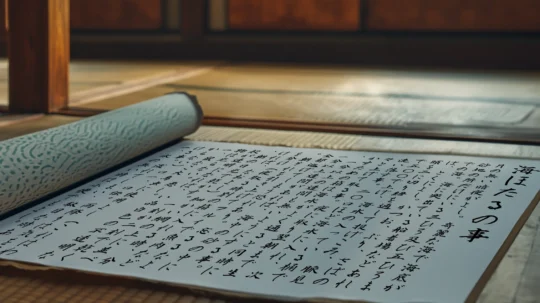


Dark, moonless nights are best. Sea fireflies are found only in beautiful seas with sandy bottoms, up to three to five Hiro (a unit of measurement) deep. If there’s a protruding dock or similar structure, it’s especially good. Cut the heads of bonito, yellowtail, or mackerel in half, thread them, and throw them into the sea. Lift them after counting to 500 to wash off in a bucket of seawater. Put about twenty in seawater, lift and collect them one after another.
To keep them alive until the next morning, use a box that allows seawater to flow through well but doesn’t have gaps larger than 一分 one Bu (3.03 mm); otherwise, they might escape into the sand. Don’t forget this.
In the morning, separate them from fish flesh using a sieve (if separated when collected at night and placed in another box, it’s even better), lay them on a fine net, and dry them in the morning sunlight. They dry in about a quarter or half an hour; the shell becomes transparent, and only the white, opaque ones won’t glow. Bad.
– Good for use against rats, large birds, and insects (this is unclear). Oral tradition. Be careful when it rains; they can wash away and be ruined.
– If there’s no water, urine is also fine.
– Discuss the method of attachment with allies.
– To inform those coming later.
– For use on the way back. In places invisible to the enemy but visible to the infiltrator, bad places, good places (when facing the enemy outward), west, near the entrance of lavatories, from that place visible, rarely visited by people but clearly visible, inside a pond (moats are bad because they’re too wide), under eaves, under the floor, at the folding point of a ladder ascending from below, at a stone dropping point.
– Apply at the base of trees. Even if it rains, the water sliding down the tree won’t wash it away. Heavy rainfall is bad for the base of the tree.
– If it’s raining heavily, break a branch and attach it in the direction of the path. Tie the branch above where the firefly is attached. When returning from a ninja mission, remove it. Fireflies are good.
– When water is added, they can glow for about one and a half minutes per inch and minute. Good in spring, autumn, and winter; in summer, they last for about a quarter of an hour. Good.
– High places (climbing up to attach takes time), low places are easily discovered. However, since Yasuda-ryū’s fireflies are used at night, one foot above the ground is best.
– To inform and communicate with those coming later. Use standing 1, 2, 3, horizontal 1, 2, 3, L-shaped 1, 2, 3, circle (draw thickly) 1, 2, 3, “me” 1, 2, 3, all types of combinations. Windmills are good in windy conditions – spinning fire (used in high places) is very good.
– Decide the length of the string based on the wind’s strength. No fireflies on the back.
– Attach to a tree branch. With the wind, it spins, having fireflies painted on one side only, so it appears and disappears. Do not attach within reach.
– To distract the enemy or as a sign for allies. Decide the length of the string based on the wind’s strength.
– For transport, just roll it up.
– Dark nights are preferable, but if there’s a moon, the lower, darker spots are best.
– High trees within a forest are very good. However, decide by throwing a string over them. But it should be visible from below.
This translation was done by ChatGPT and may not be 100% accurate. I suggest you go to Sean Askew’s web site and find a better translation. The whole 秘蔵の伝書 Hizō no Densho from 矢寿駄流 Yasuda-ryū is published in the end of Masaaki Hatsumi’s book 忍法大全 Ninpō Taizen.
This exploration into the ninja’s use of sea-fireflies reveals a fascinating intersection of nature, strategy, and survival.
The post 海蛍 Umi Hotaru: The Ninja’s Nighttime Guide appeared first on 武神館兜龍 Bujinkan Toryu.…
Read MoreFrom 武神館兜龍 Bujinkan Toryu by Mats Hjelm "Bujinkan Toryu"
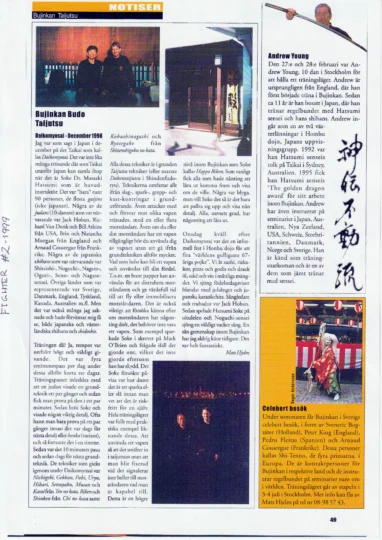


In December 1998, I had the incredible opportunity to attend Daikomyosai, a martial arts event held in Japan. Daikomyosai, also known as Taikai, is an annual gathering of martial artists from around the world. This event is unique, primarily because it is presided over by Soke Dr. Masaaki Hatsumi, the head instructor of the Bujinkan organization. In this essay, I will provide insights into my experiences during Daikomyosai, the rigorous training sessions, and the diverse group of participants.
Daikomyosai brought together a diverse group of martial artists, with around 90 participants, mostly gaijins (non-Japanese). Among the attendees were several judans (10th-degree black belts), including notable figures like Jack Hoban, Richard Van Donk, and Bill Atkins from the USA, Brin and Natascha Morgan from England, and Arnaud Cousergue from France. Japanese shihans (instructors) such as Shiraishi, Noguchi, Nagato, Oguri, Seno, and Nagase-sensei also joined the event. Representatives from countries like Sweden, Denmark, England, Germany, Canada, and Australia enriched the international mix. Despite the impressive turnout, there were still many notable absentees, both Japanese and Western shihans and shidoshis.
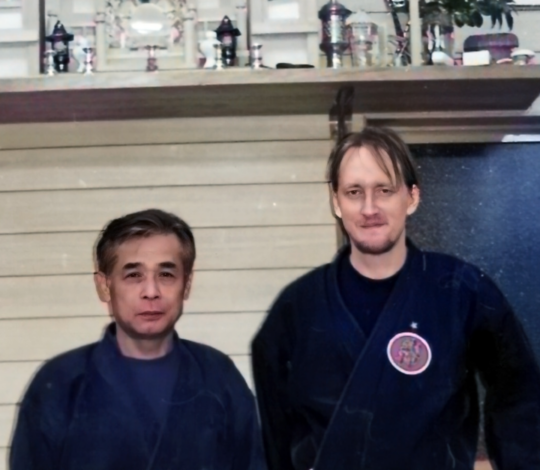


The training sessions at Daikomyosai were intense and highly rewarding. Each day consisted of four one-hour sessions, totaling a grueling three days of training. The sessions began with a judan demonstrating a fundamental technique a few times, allowing participants to practice for a brief period. Soke would then break down the technique, often highlighting essential details. The pace was rapid, with participants getting only a few attempts before moving on to the next detail or variation (henka). After each hour of training, there was a short 10-minute break before diving into the next fundamental technique.
Daikomyosai covered various techniques, including Nichigeki, Gekkan, Fubi, Uryu, Hibari, Setsuyaku, Musan, and Karai from Ten no kata, Riken, and Shinken from Chi no kata, as well as Kobushinagashi and Ryotegake from Shizenshigoku no kata. These techniques primarily belonged to the realm of Taijutsu, specifically Dakentaijutsu in Shindenfudo-ryu. They encompassed a wide range of techniques, including strikes, kicks, joint locks, throws, and counters. Training also included scenarios involving attacks and defenses against various weapons, often with multiple opponents. The emphasis was on utilizing available objects as weapons or distractions, even something as simple as a bundle of paper.
One crucial lesson from Daikomyosai was the importance of adapting and staying aware of your surroundings. Whether armed or unarmed, the focus was on using your environment and any available objects to your advantage. It was essential to assess your opponent for hidden threats, not limited to weapons. For instance, Soke demonstrated the folly of attacking an opponent before ensuring it was safe, highlighting the need for risk assessment.
Daikomyosai also introduced us to a concept known as Happo Biken, a high-level skill within the Bujinkan system. It encourages practitioners to showcase their knowledge and share insights, regardless of their rank. Shyness had no place, as everyone was encouraged to step forward and teach if they had something valuable to share. The spirit of learning and teaching pervaded the entire event.
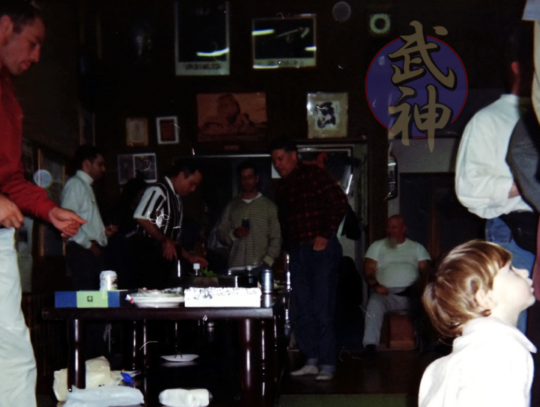


Beyond the intense training, Daikomyosai offered moments of camaraderie and celebration. An informal gathering at the Honbu dojo was held to celebrate a significant milestone – Hatsumi Soke’s 67th birthday. Participants indulged in a feast of sushi, risotto, pizza, and sweets, accompanied by beer, sake, and wine in moderation. The celebration included a blend of birthday songs, Christmas carols, and Japanese karaoke hits. Jack Hoban served as the master of ceremonies and troubadour.
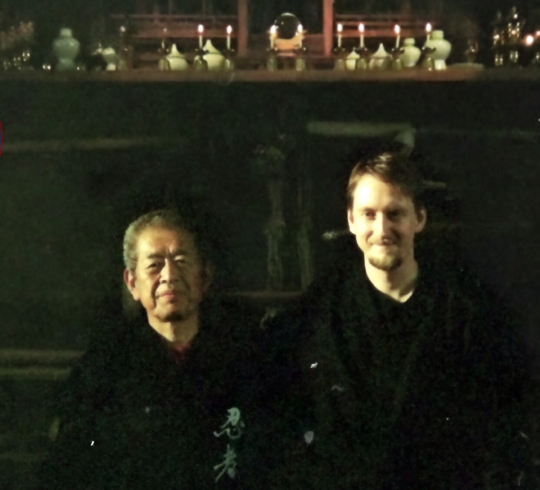


Daikomyosai left a lasting impression, creating a sense of community like no other. The shared experiences and learning opportunities were truly extraordinary. It was a testament to the global reach and enduring legacy of Bujinkan martial arts.
In conclusion, my journey to Daikomyosai in December 1998 was a remarkable experience filled with intensive training, cultural exchange, and the celebration of a martial arts legend’s birthday. The lessons learned at Daikomyosai extended beyond martial techniques, emphasizing adaptability, awareness, and the spirit of sharing within the Bujinkan community.
The post Daikomyosai – December 1998: A Glimpse into the Bujinkan World appeared first on 武神館兜龍 Bujinkan Toryu.…
Read MoreFrom 武神館兜龍 Bujinkan Toryu by Mats Hjelm "Bujinkan Toryu"



In December 1998, I had the incredible opportunity to attend Daikomyosai, a martial arts event held in Japan. Daikomyosai, also known as Taikai, is an annual gathering of martial artists from around the world. This event is unique, primarily because it is presided over by Soke Dr. Masaaki Hatsumi, the head instructor of the Bujinkan organization. In this essay, I will provide insights into my experiences during Daikomyosai, the rigorous training sessions, and the diverse group of participants.
Daikomyosai brought together a diverse group of martial artists, with around 90 participants, mostly gaijins (non-Japanese). Among the attendees were several judans (10th-degree black belts), including notable figures like Jack Hoban, Richard Van Donk, and Bill Atkins from the USA, Brin and Natascha Morgan from England, and Arnaud Cousergue from France. Japanese shihans (instructors) such as Shiraishi, Noguchi, Nagato, Oguri, Seno, and Nagase-sensei also joined the event. Representatives from countries like Sweden, Denmark, England, Germany, Canada, and Australia enriched the international mix. Despite the impressive turnout, there were still many notable absentees, both Japanese and Western shihans and shidoshis.



The training sessions at Daikomyosai were intense and highly rewarding. Each day consisted of four one-hour sessions, totaling a grueling three days of training. The sessions began with a judan demonstrating a fundamental technique a few times, allowing participants to practice for a brief period. Soke would then break down the technique, often highlighting essential details. The pace was rapid, with participants getting only a few attempts before moving on to the next detail or variation (henka). After each hour of training, there was a short 10-minute break before diving into the next fundamental technique.
Daikomyosai covered various techniques, including Nichigeki, Gekkan, Fubi, Uryu, Hibari, Setsuyaku, Musan, and Karai from Ten no kata, Riken, and Shinken from Chi no kata, as well as Kobushinagashi and Ryotegake from Shizenshigoku no kata. These techniques primarily belonged to the realm of Taijutsu, specifically Dakentaijutsu in Shindenfudo-ryu. They encompassed a wide range of techniques, including strikes, kicks, joint locks, throws, and counters. Training also included scenarios involving attacks and defenses against various weapons, often with multiple opponents. The emphasis was on utilizing available objects as weapons or distractions, even something as simple as a bundle of paper.
One crucial lesson from Daikomyosai was the importance of adapting and staying aware of your surroundings. Whether armed or unarmed, the focus was on using your environment and any available objects to your advantage. It was essential to assess your opponent for hidden threats, not limited to weapons. For instance, Soke demonstrated the folly of attacking an opponent before ensuring it was safe, highlighting the need for risk assessment.
Daikomyosai also introduced us to a concept known as Happo Biken, a high-level skill within the Bujinkan system. It encourages practitioners to showcase their knowledge and share insights, regardless of their rank. Shyness had no place, as everyone was encouraged to step forward and teach if they had something valuable to share. The spirit of learning and teaching pervaded the entire event.



Beyond the intense training, Daikomyosai offered moments of camaraderie and celebration. An informal gathering at the Honbu dojo was held to celebrate a significant milestone – Hatsumi Soke’s 67th birthday. Participants indulged in a feast of sushi, risotto, pizza, and sweets, accompanied by beer, sake, and wine in moderation. The celebration included a blend of birthday songs, Christmas carols, and Japanese karaoke hits. Jack Hoban served as the master of ceremonies and troubadour.



Daikomyosai left a lasting impression, creating a sense of community like no other. The shared experiences and learning opportunities were truly extraordinary. It was a testament to the global reach and enduring legacy of Bujinkan martial arts.
In conclusion, my journey to Daikomyosai in December 1998 was a remarkable experience filled with intensive training, cultural exchange, and the celebration of a martial arts legend’s birthday. The lessons learned at Daikomyosai extended beyond martial techniques, emphasizing adaptability, awareness, and the spirit of sharing within the Bujinkan community.
The post Daikomyosai – December 1998: A Glimpse into the Bujinkan World appeared first on 武神館兜龍 Bujinkan Toryu.…
Read More